
Chicago Now: How to See the Urban Jewel
Enjoy the city from a new angle on the Riverwalk, 100-year-old Navy Pier from a giant Ferris wheel.
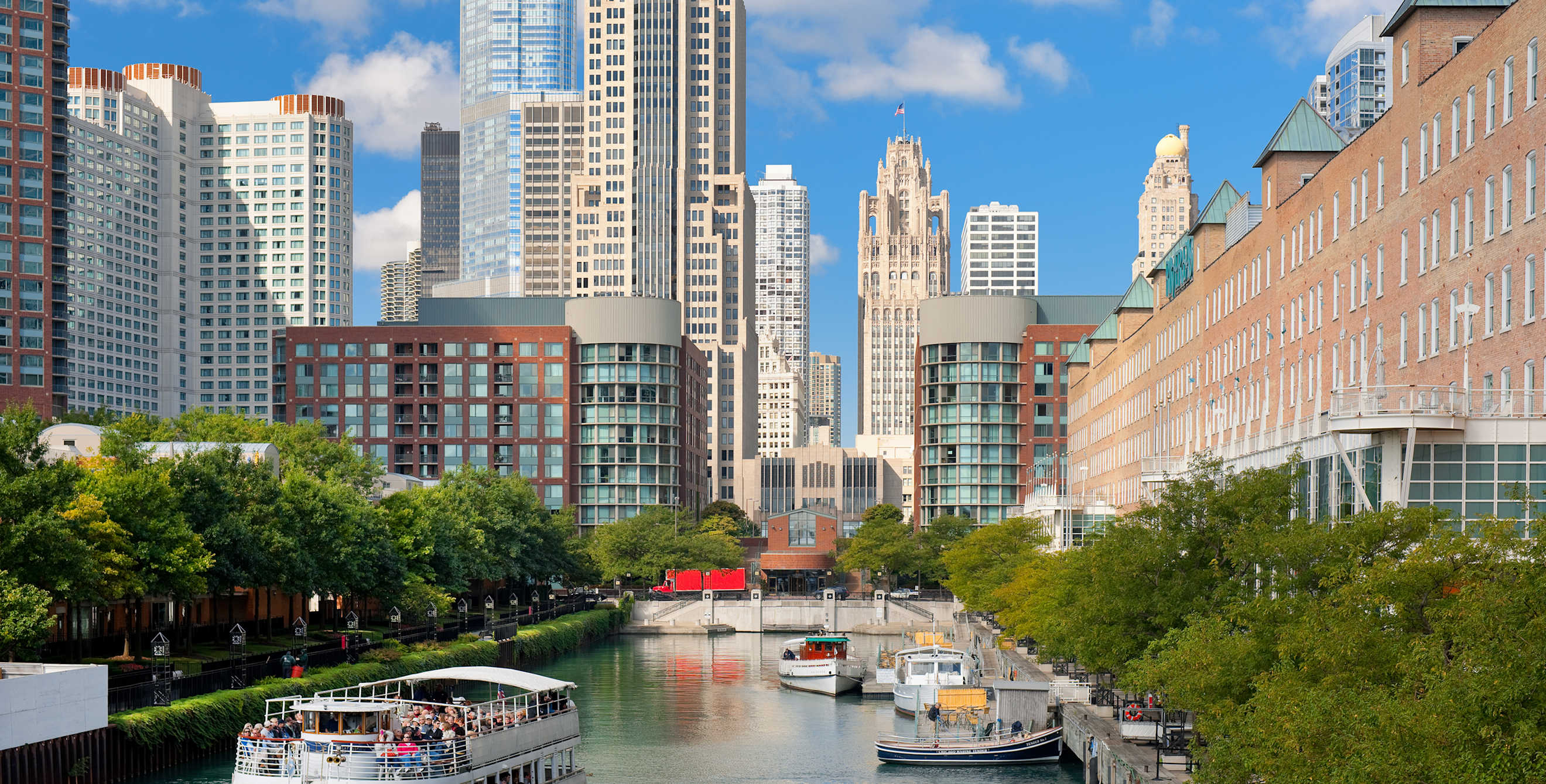
Anyone who knows Chicago knows its rugged skyline, which rises from the tip of Lake Michigan like some cliff of masonry, glass, and steel. The staggering wall of towers, craggy and smooth, is divided by a river that carries cargo ships inland from the great lake. Recreational vessels—tour boats, kayaks, canoes—crowd the waterway when weather permits, giving passengers and paddlers fresh perspectives on the city. Pedestrians too can admire the architectural feats from low-lying angles as they stroll beneath century-old drawbridges on the Chicago Riverwalk.
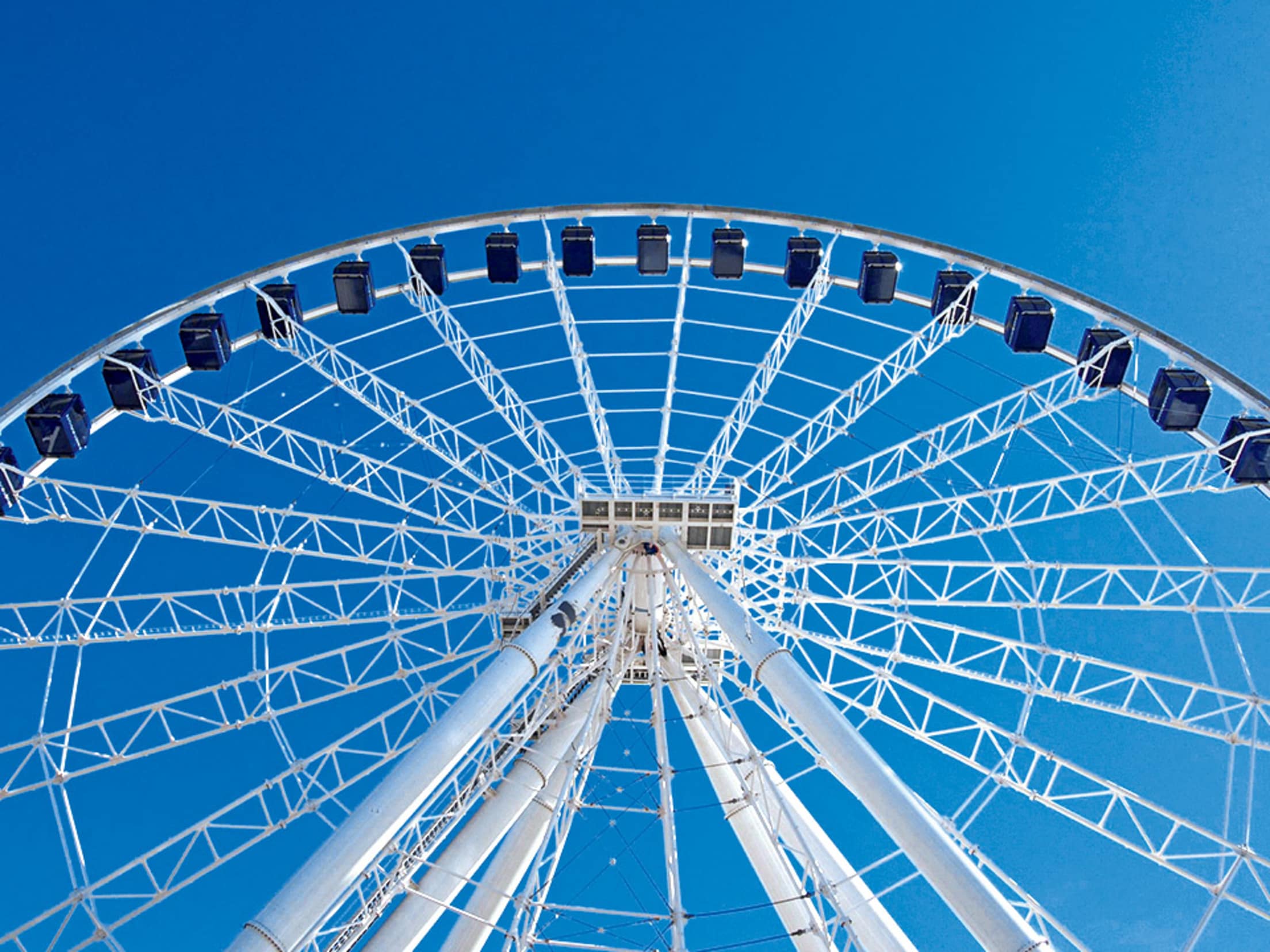
Navy Pier sports a Ferris wheel.
The 1.25-mile promenade runs along the river's south bank, from lakefront to Lake Street. Dubbed the city's "second waterfront," the public park is designed to change the way people experience downtown. Its nearly complete final stretch adds landscaped areas and floating gardens, direct routes for foot traffic, and amenities such as an amphitheater and a fishing pier. The project reflects Chicago's ambitious efforts to preserve the past, embrace the future, and attract visitors.
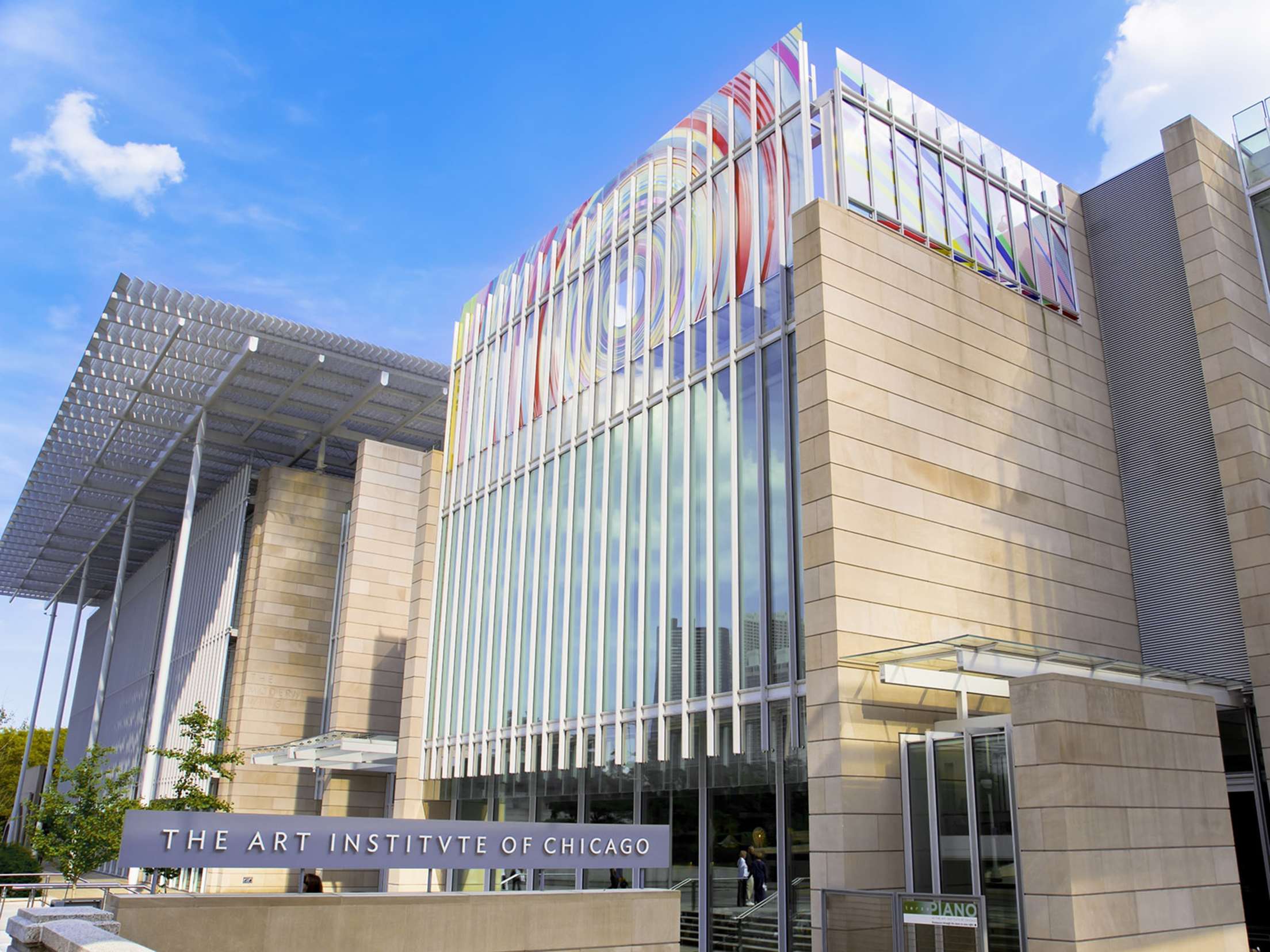
"When I was growing up here, our interaction with the river was to throw garbage into it from the bridges and watch it float," says writer Edward Lifson, a Chicago native and longtime cultural critic. "Now you can go down to the water and it's like being on vacation—quieter, with a slower pace. The whole feel of the place is different."
Make no mistake: This is still Chicago, where commuter trains rumble overhead, Al Capone T-shirts fill souvenir shops, and the Cubs break hearts year after year. Deep-dish pizza abounds. (Try Lou Malnati's, a local chain that transforms pepperoni with extra sauce into a dense, irresistible delight.)
But lately, even the city's most familiar attractions are getting upgrades. Navy Pier celebrated its 100th birthday in May by unveiling a 196-foot-high Ferris wheel, 50 feet taller than its groundbreaking predecessor. A few blocks away, the Art Institute of Chicago in December reopened its contemporary art galleries to showcase 44 works by Andy Warhol, Cindy Sherman, and other modern masters, thanks to a gift valued at $400 million, the largest donation in the museum's history.
Hoteliers are painstakingly restoring iconic buildings such as the Chicago Athletic Association, a Venetian Gothic gem with a lavish wood-paneled lounge that dates to 1893. Kimpton Hotels is now accepting September bookings for its revival of the 1894 New York Life building by William Le Baron Jenney, designer of the first U.S. skyscraper.

Dove's Luncheonette serves a scrumptious fried chicken.
You don't need a reservation to enjoy the city's open spaces. In addition to the Riverwalk, there's the 606, named for the first three digits of local zip codes. The 2.7-mile elevated path reclaims an abandoned railroad viaduct that traverses four neighborhoods. The route widens in spots to incorporate grass, flowers, or poplar trees.
The park, which opened in 2015, caters to walkers, runners, and bicyclists—and continues to evolve. "The community liked the idea of treating the viaduct as an urban ruin," says Beth White of the Trust for Public Land, a nonprofit that helped plan and fund the 606. "When it comes to remaking nature, we're not real subtle."
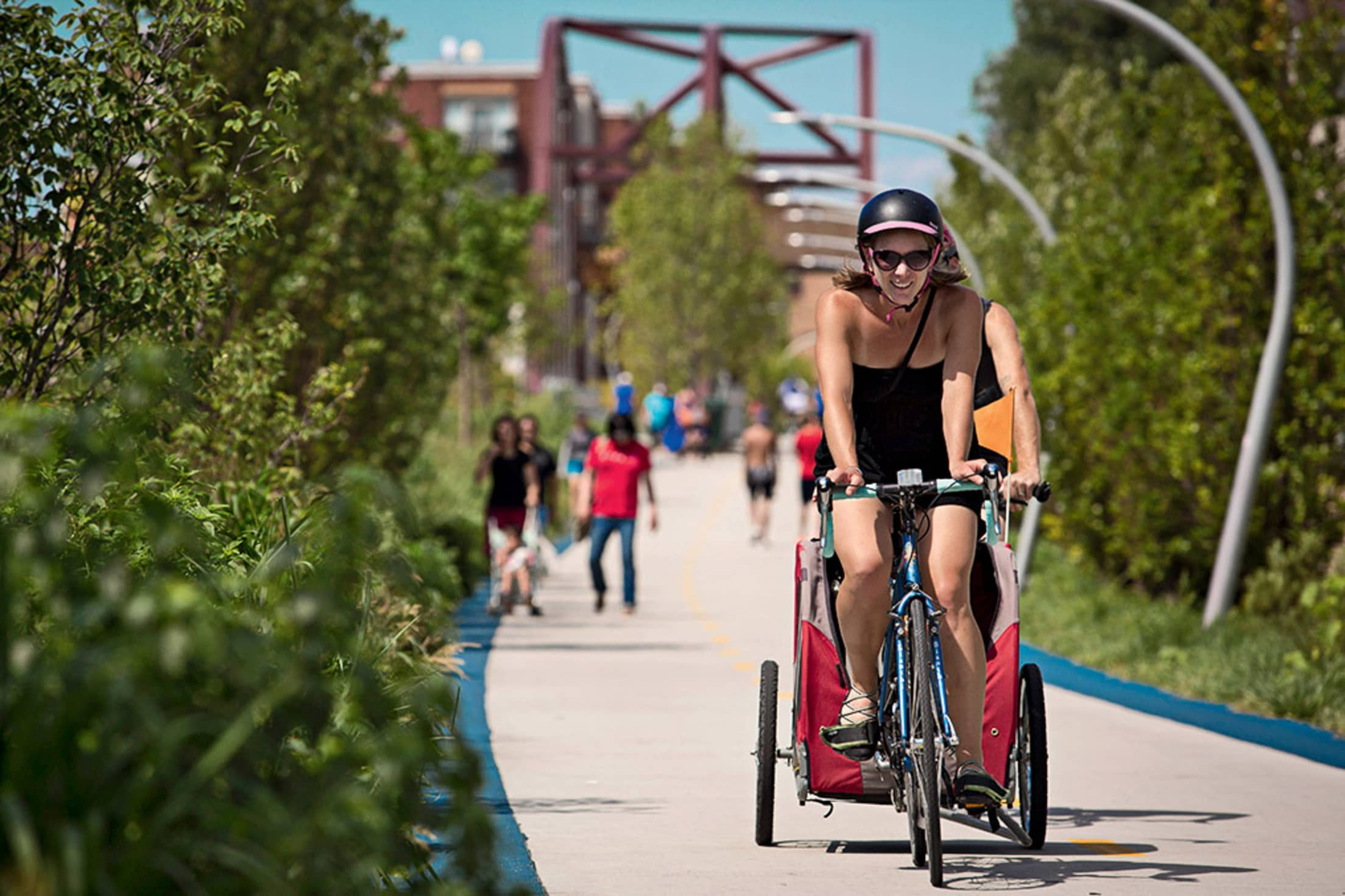
A cyclist enjoys the elevated 606 trail.
The 606 is reachable from downtown on the L train's Blue Line: From the Damen stop in Wicker Park, meander eight blocks up North Damen Avenue to the access ramp. Along the way, you'll encounter tempting detours, from terrific restaurants to trendy boutiques. Drop by Dove's Luncheonette, where the fried chicken comes bathed in chorizo gravy, or Buzz: Killer Espresso, a nook that bills itself as "life support for coffee geeks." Hit the Flat Iron Building to browse two floors of artist studios; the site hosts a free First Friday event monthly. Or pop into Vintage Charm to pick up drink coasters by Chicago photographer Denise Riesen.
Restaurants offer similar jousts of old vs. new, particularly in the West Loop, where you'll find the city's hottest dining scene. A former cold-storage warehouse holds posh Swift & Sons, a purveyor of locally sourced beef. The crowded Au Cheval, which sounds like a fussy Parisian affair but isn't, serves a delectable "single" burger that's actually two dinerstyle griddled patties with fries cooked in pork fat. Cemitas Puebla whips up traditional Poblano sandwiches, such as breaded pork loin with the seasonal herb pápalo, in a modern, festive atmosphere.
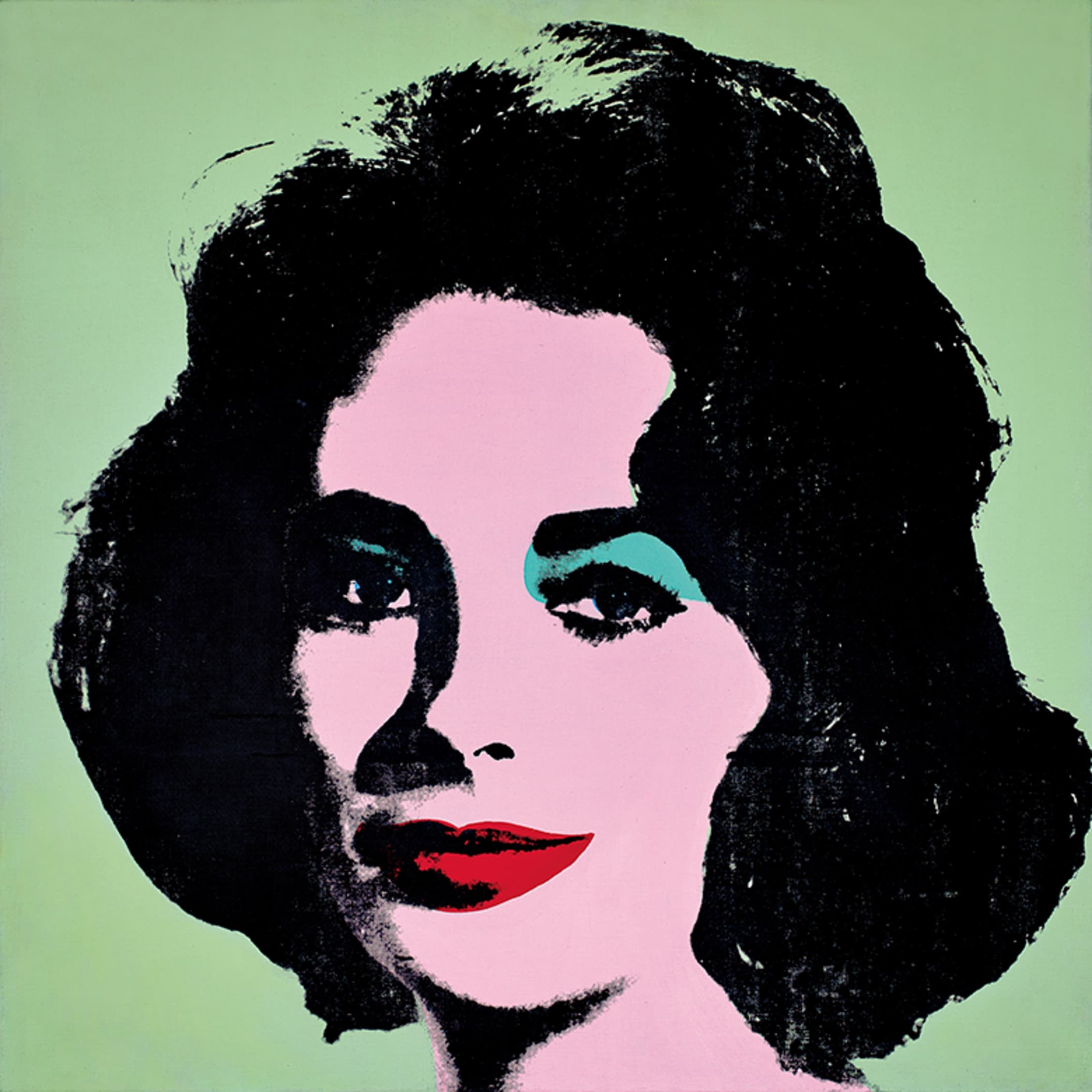
Andy Warhol's Liz #3 (Elizabeth Taylor) is on display at the Art Institute of Chicago.
Back downtown, head to Maggie Daley Park. Opened in late 2014 on 25 acres of lakefront, the park provides climbing walls, tennis courts, picnic areas, and playgrounds for children of varying ages. Big kids (16 and older) can pick up a rental from Divvy, Chicago's expansive bike-sharing program, and ride two miles south to Northerly Island, which is a peninsula despite the name.
In 2003, then mayor Richard M. Daley had the runways of a small airfield bulldozed in the dead of night (ah, Chicago!). Today the land contains a 45-acre nature preserve with a paved trail set amid prairie and wetlands. The effect is surreal yet serene—blue lake on one side, burly convention center on the other, the skyline a spiky backdrop.
As unexpected as any one of these offerings may seem, none feels out of place. Each stays true to the character of Chicago, a city that remains provocative without being pretentious.
Unlock exclusive Member benefits when you book a trip to Chicago through AAA Travel.